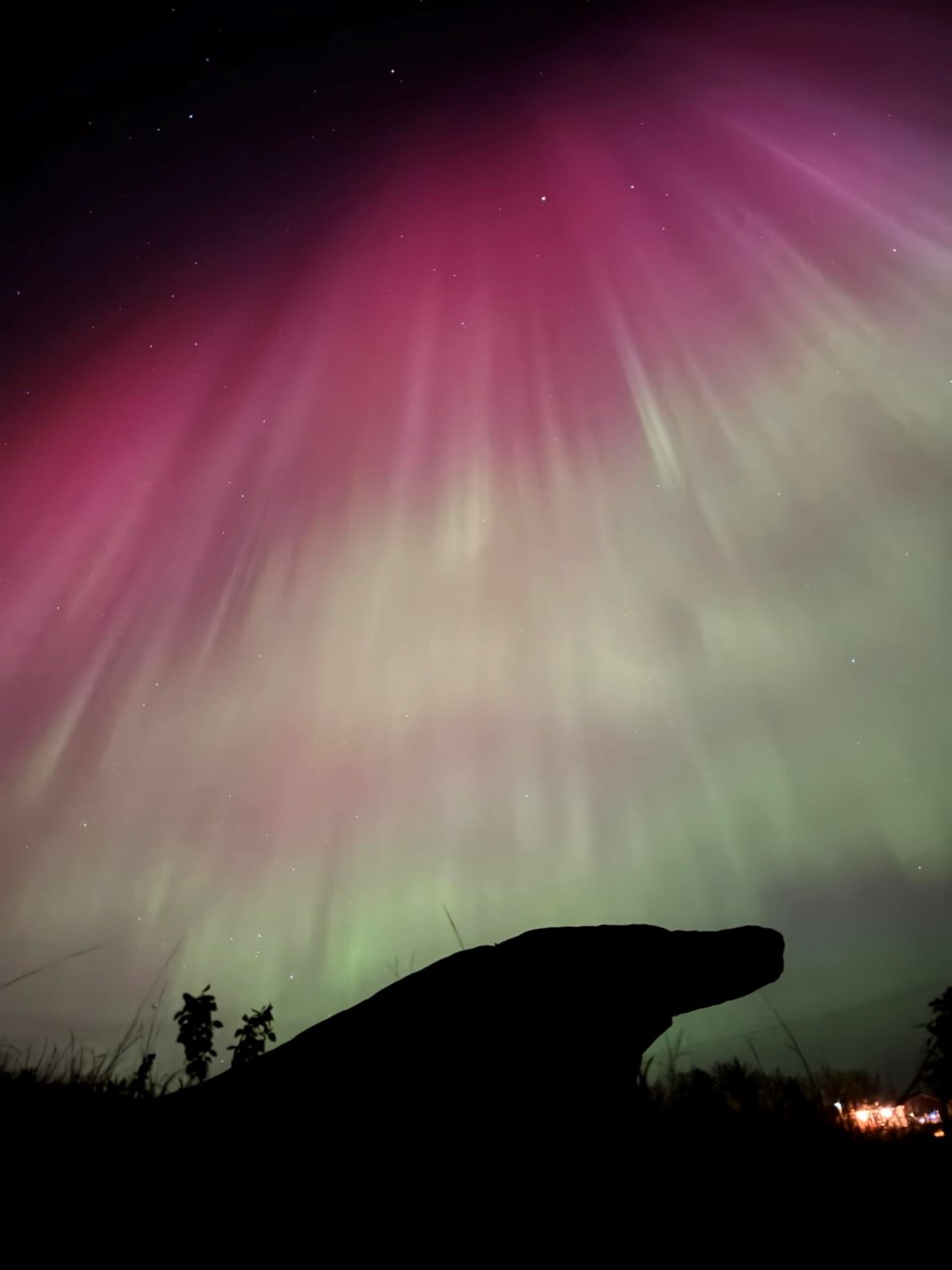ESTEVAN — A series of powerful solar storms treated residents of southeastern Saskatchewan and many other areas in southern parts of Canada, the U.S., and parts of Europe to magnificent night views last night.
The storms brought in the Aurora Borealis, or northern lights, which were unusually visible far south on Friday and are expected to make another appearance on Saturday night.
The recent geomagnetic storm resulted in colorful auroras throughout most of the night. Colors beyond green could be seen with the naked eye, allowing many residents of southeast Saskatchewan to experience the living skies.
The KP index, a globally averaged indicator of geomagnetic activity, remained at over 8.5 out of 10 on Saturday morning and was expected to remain elevated throughout the day and into the night. Unless clouds will cover the sky, those in the southeast who missed Aurora’s earlier appearance, will have another chance.
The aurora borealis, or the northern lights, is a mesmerizing natural phenomenon characterized by vibrant and colorful lights dancing across the night sky, primarily observed in high-latitude regions near Earth's polar regions, such as the Arctic Circle. The aurora borealis is caused by the interaction of charged particles from the sun with Earth's magnetosphere.
While auroras can occasionally be visible in southern Saskatchewan during periods of heightened solar activity and favorable geomagnetic conditions, their frequency of occurrence in this region is generally lower compared to more northern latitudes.
The term "aurora borealis" comes from the Latin words "aurora," meaning "dawn," and "borealis", derived from the name of the ancient god of the north wind Boreas meaning "of the north." It is named after the Roman goddess of dawn, Aurora, and the northern location where the phenomenon is often observed.
Overall, the aurora borealis is a captivating manifestation of the complex interaction between the sun, Earth's magnetic field, and the planet's atmosphere.





